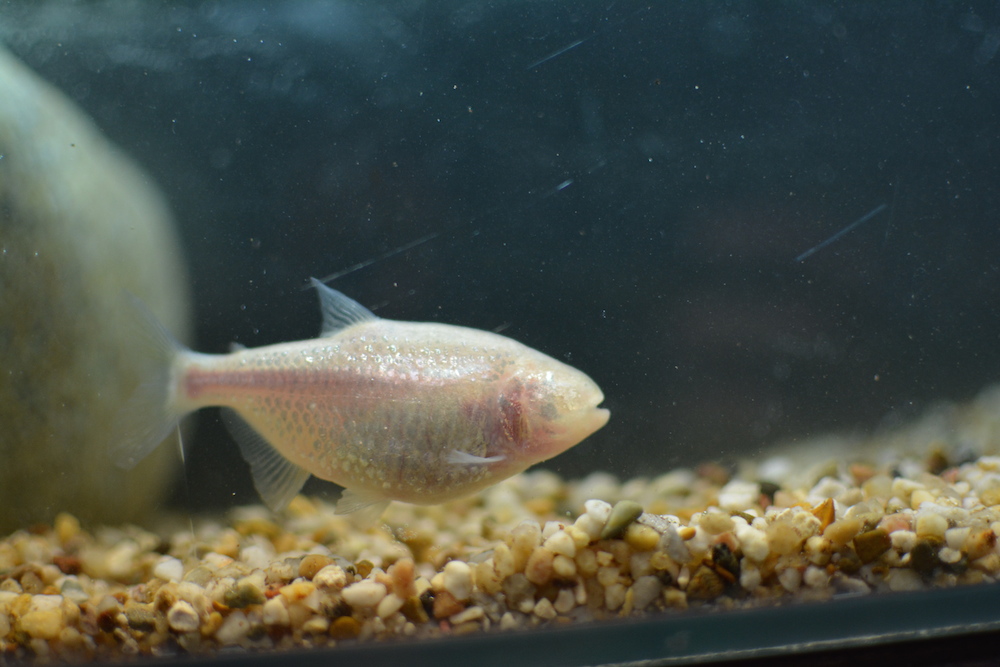Blind Cavefish Froze Its Internal Clock to Save Energy

Some creatures will go to great lengths just to save a little energy. Take the blind Mexican cavefish; this super-efficient animal uses almost 30 percent less energy to survive than its counterparts in surface waters, and it accomplishes this in a rather interesting way, a new study suggests.
The blind Mexican tetra or cavefish (Astyanax mexicanus) saves energy by forgoing circadian rhythms, according to researchers at Lund University in Sweden. Sometimes referred to as an internal clock, circadian rhythms help many organisms — including animals, plants, fungi and even certain bacteria — coordinate their behavior and physiology with the day-night cycle, according to study researcher Damian Moran, a postdoctoral student in the Lund University department of biology.
This clock provides one of its most important functions by controlling metabolism, or the chemical reactions involved in maintaining healthy cells and breaking down molecules to gain energy. Circadian rhythm helps ensure these reactions occur in advance of when an organism will most need energy, Moran told Live Science. [In Images: The Extraordinary Evolution of 'Blind' Cavefish]
"It takes time to make proteins and the things that are needed to help us digest, to run or to see, so by having a clock mechanism that is tuned to your environment, you can get your metabolism ready in advance of when you may need it," Moran said. Humans, he added, do this while they sleep.
But unlike most organisms, blind Mexican cavefish don't control their metabolism with a circadian clock, the researchers found. The scientists learned this after comparing the metabolic rate, or rate of oxygen consumption, of cave-dwelling A. mexicanuswith that of surface-dwelling A. mexicanus.
The researchers exposed both kinds of fish to light-dark conditions that mimicked a 24-hour day, as well as conditions of total darkness. They found the surface-dwelling fish consumed more oxygen during daylight hours, even in the absence of any daylight.
"This is the same as if you or I were put in a dark room for a couple of days," Moran said. "We would show this kind of cycle, because we have this clock inside our bodies."
Sign up for the Live Science daily newsletter now
Get the world’s most fascinating discoveries delivered straight to your inbox.
However, the cave-dwelling fish did not exhibit the same behavior. Regardless of whether it was light or dark, the fish consumed roughly the same amount of oxygen, the researchers found. By forgoing the circadian rhythms that control metabolism, the blind Mexican cavefish was able to expend nearly 30 percent less energy in a 24-hour period than its surface-dwelling counterparts.
"We know they save a lot of energy, and that's good if you're living in a cave, because caves tend to be quite food limited," Moran said. The blind Mexican cavefish has evolved other distinctive characteristics that make it better suited to living in a pitch-black environment. Most notably, the creature doesn't have any eyes.
But it's the absence of an internal clock that Moran and his colleagues are most interested in at the moment. And they're not alone. Earlier this year, researchers from University College London and the National Autonomous University of Mexico published a study in the journal Nature Communications, which similarly showed that blind Mexican cavefish lack normal circadian rhythms.
"Not only do we not really know that much about circadian energy use in animals in general, we don't even know how to consider animals that don't have these circadian rhythms," Moran said. "We tend to assume that these rhythms are always adaptive, that they serve some really important purpose. But what happens in animals that don't have these cycles? It's a real conundrum."
The new findings were published today (Sept. 24) in the journal PLOS ONE.
Follow Elizabeth Palermo @techEpalermo. Follow Live Science @livescience, Facebook & Google+. Original article on Live Science.

Elizabeth is a former Live Science associate editor and current director of audience development at the Chamber of Commerce. She graduated with a bachelor of arts degree from George Washington University. Elizabeth has traveled throughout the Americas, studying political systems and indigenous cultures and teaching English to students of all ages.










